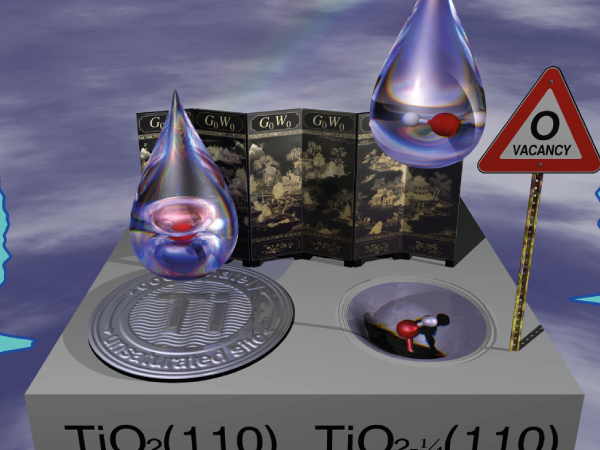Electronic level alignment at the interface between an adsorbed molecular layer and a semiconducting substrate determines the activity and efficiency of many photocatalytic and photovoltaic materials. Accurately describing this interfacial level alignment requires a proper description of the anisotropic screening at the interface. This necessitates the use of many-body quasiparticle (QP) GW techniques for the level alignment, and solving the Bethe-Salpeter equation (BSE) to obtain accurate absorption spectra. We compare the calculated and measured interfacial level alignment for prototypical photocatalytic (water and methanol) and photovoltaic (catechol) layers on rutile TiO2(110). Specifically, we compare the interfacial level alignment from GGA DFT, hybrid DFT and G0W0, scQPGW1, scQPGW0, and scQPGW quasiparticle calculations with two-photon photemission (2PP), ultraviolet photoemession spectroscopy (UPS) and inverse photoemission spectroscopy (IPES). These demonstrate that a QP GW treatment is required to reproduce the measured interfacial level alignment. Furthermore, we find the quasiparticle energy shifts Δ are linearly dependent on the fraction of the wave function density within the molecular layer fmol and the bulk substrate fbulk. For the unoccupied states, the same correlation holds for all the molecular layers studied. This allows one to describe the quasiparticle energy shifts semi-quantitatively for larger molecular layers on TiO2(110) based on more tractable DFT calculations.
AGENDA YACHAY TECH

GW and BSE at the Interface: H2O, CH3OH, and Catechol on TiO2

Duncan Mowbray, Ph.D.
Electronic level alignment at the interface between an adsorbed molecular layer and a semiconducting substrate determines the activity and efficiency of many photocatalytic and photovoltaic materials. Accurately describing this interfacial level alignment requires a proper description of the anisotropic screening at the interface. This necessitates the use of many-body quasiparticle (QP) GW techniques for the level alignment, and solving the Bethe-Salpeter equation (BSE) to obtain accurate absorption spectra. We compare the calculated and measured interfacial level alignment for prototypical photocatalytic (water and methanol) and photovoltaic (catechol) layers on rutile TiO2(110). Specifically, we compare the interfacial level alignment from GGA DFT, hybrid DFT and G0W0, scQPGW1, scQPGW0, and scQPGW quasiparticle calculations with two-photon photemission (2PP), ultraviolet photoemession spectroscopy (UPS) and inverse photoemission spectroscopy (IPES). These demonstrate that a QP GW treatment is required to reproduce the measured interfacial level alignment. Furthermore, we find the quasiparticle energy shifts Δ are linearly dependent on the fraction of the wave function density within the molecular layer fmol and the bulk substrate fbulk. For the unoccupied states, the same correlation holds for all the molecular layers studied. This allows one to describe the quasiparticle energy shifts semi-quantitatively for larger molecular layers on TiO2(110) based on more tractable DFT calculations.